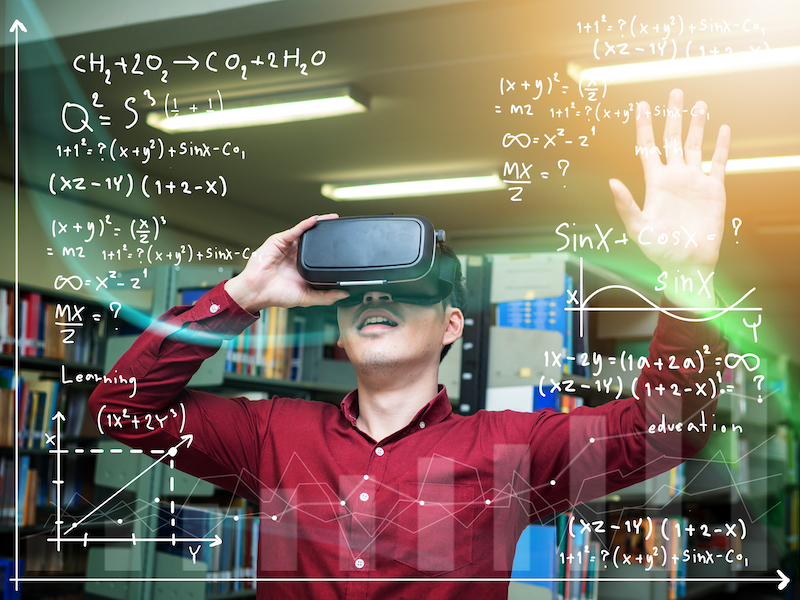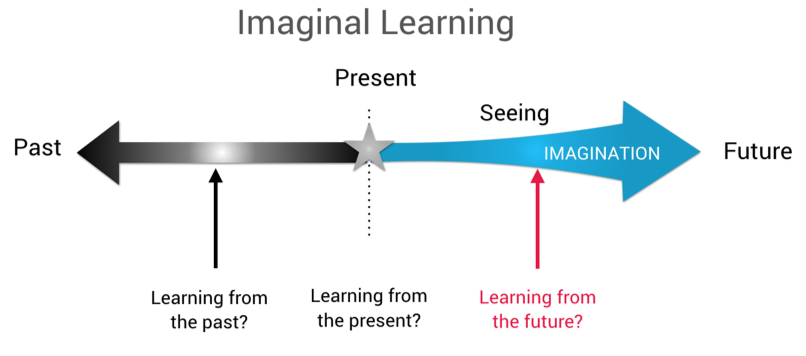 What will the future bring? More specifically, what will 2035 or 2050 look like? Most certainly we would all think that life would be significantly different from today. Is it possible to see those futures? This has an important implication for education. Virtually all of the curriculum taught in schools represents knowledge that is already known, and it is all about the past. How can we equip students to learn from the future?
What will the future bring? More specifically, what will 2035 or 2050 look like? Most certainly we would all think that life would be significantly different from today. Is it possible to see those futures? This has an important implication for education. Virtually all of the curriculum taught in schools represents knowledge that is already known, and it is all about the past. How can we equip students to learn from the future?
To learn from the future sounds rather odd since the future has not yet occurred. To learn from the future requires us first to see the future with our imagination. Imagination is the eye of the human spirit; it is that wonderful capacity with which God created us, that allows us as humans to engage in the realm of unlimited possibilities where we can create and invent. All creation starts first in the mind of the creator where they can see their creation with their imagination. The second step requires the creator to bring what they are seeing into reality, which requires the creation process. We can call this imaginal learning, which is the subject of my book, Becoming Imaginal. Imaginal learning is key to enabling our students to learn from the future.

One School’s Experience: Master’s Academy and College
I was privileged to found the Master’s Academy and College in 1997 in Calgary, Alberta, as a K–12 R&D Christian school. Since 1997, Master’s Academy and College has been developing its 21st-century learning model called Profound Learning. The Profound Learning model, with its signature of innovation and creativity based in imaginal learning, elevates the academic performance of all students while simultaneously preparing them to be future ready.
Master’s is a fully accredited school with the province of Alberta, and its students have consistently exceeded provincial standards for excellence on standardized tests. The vast majority (over 90 percent) of the graduates gain acceptance into their university of choice. The Fraser Institute has ranked Master’s Academy the #1 academic school in the province of Alberta for the past five years.
At Master’s, we want our students to not only learn from the past at a high level of proficiency, we also want them to learn from the future. However, how do you learn from the future? At Master’s, our students do this by: 1) detecting signals from the future; 2) engaging in scenario building; 3) futurecasting and backcasting; and 4) moving into invention.
Signals from the Future
Today astronomers are looking for signals from far-away galaxies to learn more about our universe. However, by the time these signals reach earth, they have been traveling for billions of years, which means what they are observing has happened long ago. Our ability to see the future is based on the future being embedded in the present in the form of strong and weak signals.
Strong signals are typically called trends that are supported by research and data. For example, the trend toward autonomous vehicles is evident and it is only a matter of time before all cars and trucks will be self-driving. There are hundreds of trends in all sectors of our society that will all interact to compose the future that will unfold. Starting in eighth grade, students at Master’s study these trends and create what we call “S curves.” An S curve shows when each trend reaches various stages of adoption based on the opinions of experts from the field. Next, students begin to use a “Future Wheel” to conduct an impact analysis of their S Curve, in the near-, mid- and long-term futures. In doing so, they use “STEEP” vantage points, which are Social, Technology, Economic, Environment and Political, and that help them consider all angles of the trend.
Scenario Building
Students will next take several of their S curve analyses and begin to “imagine” what the future will be like as a result of these trends. This capability is called “foresight.” Students now engage in “speculative” writing, which is a unique genre within their language arts curriculum, where they create plausible and rational scenarios of the future based on their trend analysis. In the field of foresight or future studies, the goal is not to predict the future—which invariably is always wrong—but instead to create many alternative futures, whether they be plausible, possible, probable, preferred or preposterous.

Master’s Academy 11th Grade Students’ S Curves
Futurecasting and Backcasting
Once some scenarios of the future have been created, you can enter the scenario by “futurecasting” and learn from it by answering the following questions: What will you need to change for this future to exist? How will you fit into this future? And if you were a business, would you be competitive based on who you are today?
The next step of learning from the future is called “backcasting,” where you begin to work backward from the future to today. This analysis will yield numerous opportunities for innovation since it will be those innovations that will usher in the future scenario you created. Our eighth-grade students will be searching for innovative ideas as they build their 2030 Calgary scenarios.
Moving into Invention
Invention is the creation of something new, and within the imaginal learning time frame, it is the “far out” or “preposterous” future that emerges 20 to 30 years from now where invention is most evident. To understand the “far out” future, students engage with weak signal research. Weak signals are on the fringe of what is possible. There is very little data that currently support these signals, which is why they are weak, but nonetheless they are being worked on and studied by many experts. Weak signals have a low probability of becoming a reality, but if they did, they would have a tremendous disruptive impact. For example, scientists are currently working on 3D printing of human tissue using a person’s cells, with the hope of one day being able to 3D-print a whole human organ using a person’s own cells. Think of the breakthrough this would be to medical science and human longevity!
Another example of a weak signal is nuclear fusion, which is the process that powers our sun. Today, we use nuclear fission, which produces a lot of nuclear waste that lasts for thousands of years. With nuclear fusion, we would be using seawater to create a virtually limitless source of energy with no environmental impact. Many researchers are working on developing a nuclear fusion reactor, and current speculation has the first viable commercial fusion reactor being available by 2050. If this were to happen, the world would have a clean, limitless supply of energy. Our ninth-grade students are engaged in weak signal research to design life on Mars in 2050.
Graduating Imaginal Leaders
Through these steps and processes, we can learn from the future. Think of the tremendous advantage Master’s students have as they graduate from our high school. Not only do they receive an excellent high-quality academic preparation for university, but they will also have developed their abilities to see the future with their imaginations and will have experienced creating the future they see. Master’s mission states that we prepare students to be “Future Ready,” but this is not an aspirational statement only. By this we mean that our pedagogy and curricula have enabled them to become imaginers of the future, and the creators of the future, by cultivating their God-given capacity for innovation and invention.
About the Author
 Tom Rudmik is the CEO and founder of Master’s Academy and College (1997), a K–12 awarding winning R&D Christian school located in Calgary, Canada. Master’s has gained international recognition for the development of its “Future Ready Model of Education” and becoming one of the top performing K–12 schools in North America. Students at Master’s have consistently outperformed provincial (state) standardized test scores and Master’s has consistently been ranked the #1 school in Alberta for academic excellence by the Fraser Institute, an independent think tank in Canada. Tom’s vision has led to the establishment of an international network called Imaginal Education, which currently is functioning in eight countries. The author of the book Becoming Imaginal: Seeing and Creating the Future of Education, Tom is a graduate of the University of Toronto with B.Sc. and B.Ed. degrees, with more than 40 years experience as a teacher, principal, pastor, entrepreneur, and visionary leader. In May 2017, Tom was granted an honorary doctorate by Canada Christian College for his 40 years of advancing education in Canada and globally. He can be reached via email at TRudmik@masters.ab.ca.
Tom Rudmik is the CEO and founder of Master’s Academy and College (1997), a K–12 awarding winning R&D Christian school located in Calgary, Canada. Master’s has gained international recognition for the development of its “Future Ready Model of Education” and becoming one of the top performing K–12 schools in North America. Students at Master’s have consistently outperformed provincial (state) standardized test scores and Master’s has consistently been ranked the #1 school in Alberta for academic excellence by the Fraser Institute, an independent think tank in Canada. Tom’s vision has led to the establishment of an international network called Imaginal Education, which currently is functioning in eight countries. The author of the book Becoming Imaginal: Seeing and Creating the Future of Education, Tom is a graduate of the University of Toronto with B.Sc. and B.Ed. degrees, with more than 40 years experience as a teacher, principal, pastor, entrepreneur, and visionary leader. In May 2017, Tom was granted an honorary doctorate by Canada Christian College for his 40 years of advancing education in Canada and globally. He can be reached via email at TRudmik@masters.ab.ca.

